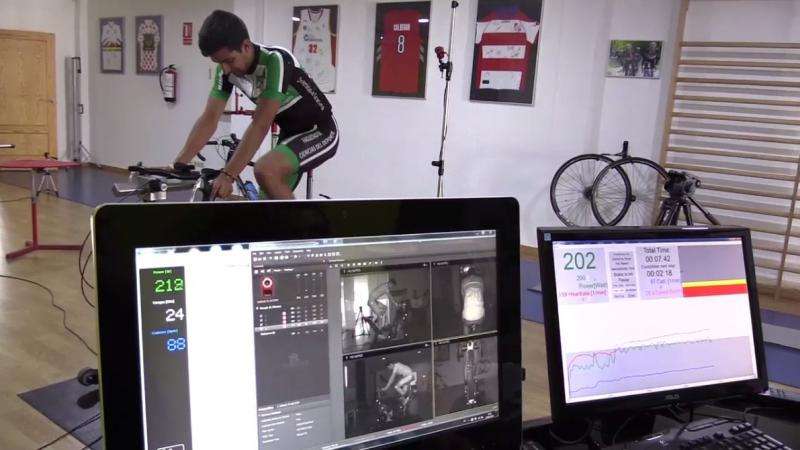Customized bikes to improve physical performance and prevent injuries

Researchers from the University of Granada (UGR) have developed a new comprehensive method to create customized bikes or adapt old ones. The customized bikes adapt to the characteristics and needs of each person, thus improving their athletic performance and preventing injuries.
The researchers of the Department of Physical Education and Sports have designed and perfected a model that transfers a series of parameters previously established in an ergometer after subjecting the rider to several examinations as well as physical and psychological tests.
As UGR professor Mikel Zabala Díaz, lead author of the model, explains, "This method saves money for the health system, since we can prevent many injuries the cyclist suffers derived from a misuse of the bike or from using a bike not suited for their body and goals. And it is a shame to see how bikes costing 6000 to 9000 euros are injuring their owners, or how there are people who intend to start practicing recreational cycling on a torture rack."
One of the advantages of the system developed at the UGR is that both amateur and professional cyclists can benefit from it. "Our goal is to prevent these athletes from slowly developing injuries due to the poor adaptation of the bike or other technical factors," says the UGR researcher.
The research group led by Mikel Zabala is the only university group in Spain that works in the ergonomic customization of bicycles for individual riders from a scientific and comprehensive point of view.
Among the tests that scientists performed on the athletes was a study of their habits, nutrition, psychological profiles, assessments of postural behavior, power profiles and measurement angles, speeds, distances, or pedaling power. Thus, they analyze the movement of toe, ankle, knee, hip, shoulder and wrist in order to determine the distance of the most relevant segments for each pedaling angle.
The researchers then transfer all this information to the ergometer, and then pass it to the user's bicycle. Among other parameters, they modify the type of saddle as well as its height, angle, width and shape, along with the length and angle of the stem (the part that holds the handlebars), the width, shape and materials of the handlebars, suspension type in the case of mountain bikes, or the length of the crank arms (the elements that transmit power from the pedals to the crankset).
Díaz says, "The real novelty of this comprehensive method is not the object of study, which is crammed with commercial methods and pseudo-methods, but how it has been approached: from the interrelation of areas such as physiotherapy, biomechanics, training, psychology or even nutrition. An intolerance to a food, for example, can influence pedaling muscle work, in the same way that fear or insecurity can generate certain muscle overload. The bottom line is that all should be described and analyzed in an interrelated manner, not analytically, so that the users receive a response that allows them to properly ride a bike and hence improve their quality of life and/or sporting performance."





















